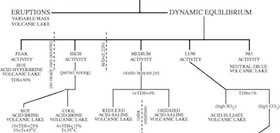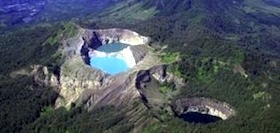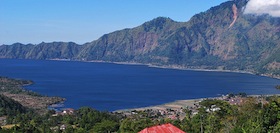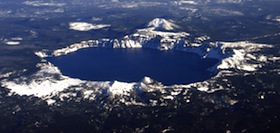Volcanic Lakes
Welcome to the world wide web page devoted to disseminating information on the science of volcanic lakes! This page contains information on how volcanic lakes work and details about many specific lakes.

Tiwo Nua Muri Koohi Fah- The lake of "young men and maidens"
Keli Mutu Volcano, Flores, Indonesia
pH=0.3. The yellow floating debris is sulfur.
Introduction to Volcanic Lakes
A volcanic lake is a cap of meteoric water over the vent of an active volcano. Only 12% of the world's 714 Holocene-aged (~10,000 yrs old) or younger volcanoes listed in the Catalog of Active Volcanoes of the World have such a lake (Rowe et al, 1992). What makes volcanic lakes so rare is that their presence and expression require a special balance ofvolcanic heat flux versus atmospheric cooling and precipitation versus evaporation. The volcanic structure (e.g. substratum permeability and crater shape) is also important, but it is the former parameters- the endogene and exogene forces at work in a given crater subenvironment- that condition the lake's chemistry which in turn is indicative of volcanic activity and geo-hydrochemical processes.
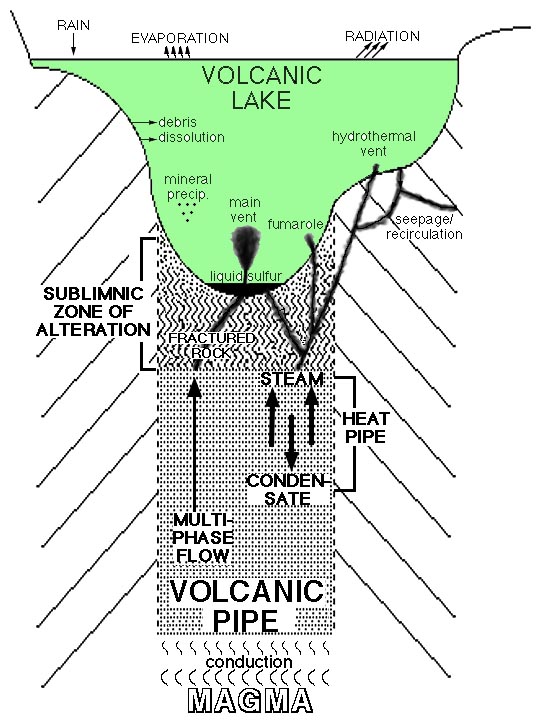
Volcanic Lake News
- "The first version of VOLADA, the first collaborative data base on volcanic lakes, is now available on VHub. To have access to VOLADA, please register at https://vhub.org/ and adhere to the "iavcei commission on volcanic lakes" group by sending a group request to https://vhub.org/groups/iavceicvl. IAVCEI stimulates to use of VHub to become the major interactive forum of IAVCEI and Commission activities." - Dmitiri Rouwet, July 9, 2013.


